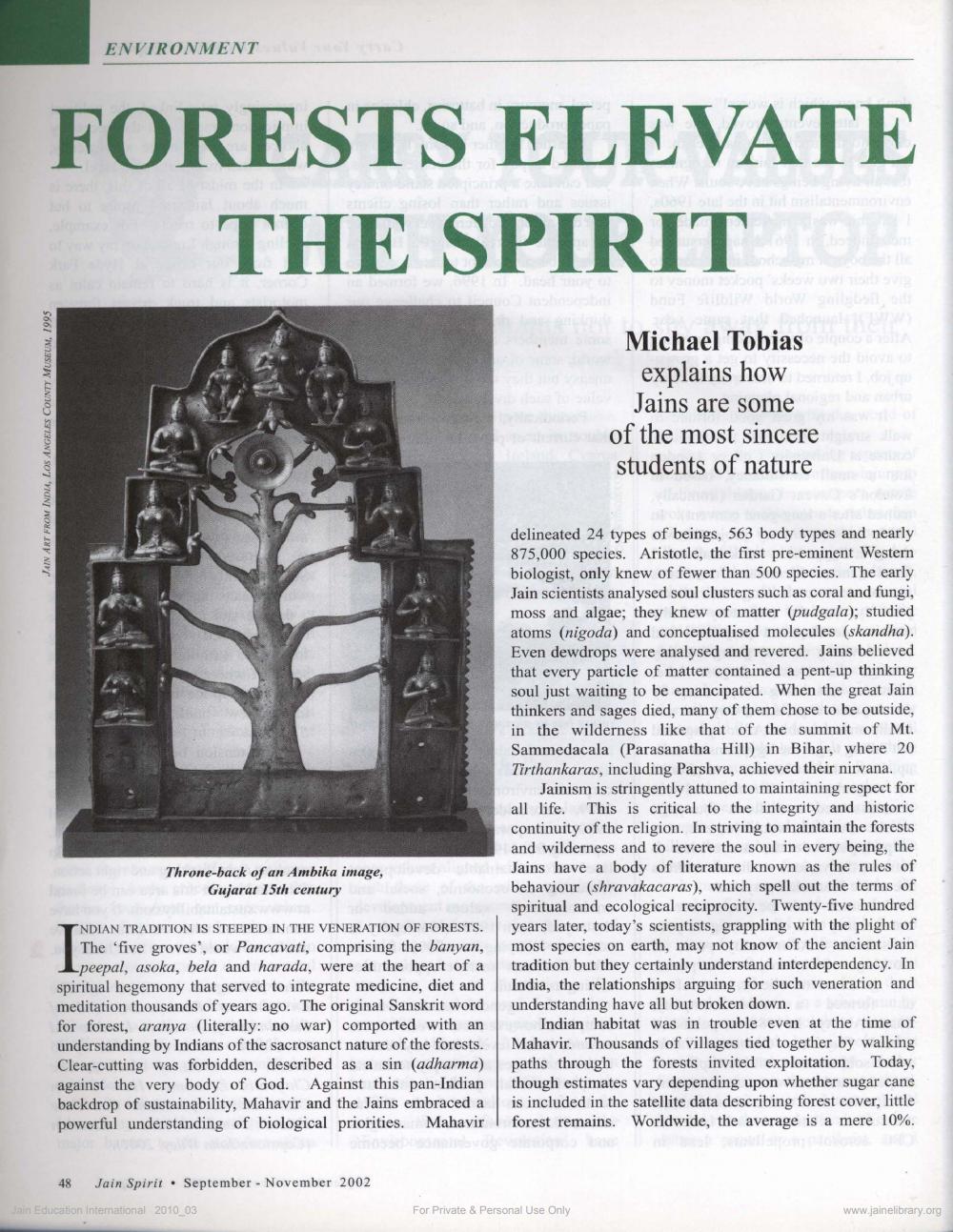________________
FORESTS ELEVATE
afque
JAIN ART FROM INDIA, LOS ANGELES COUNTY MUSEUM, 1995
ENVIRONMENT (
48
0001 otul adt af tid malenomnovna
THE SPIRIT TOP
Vanom 250oq bow with vig bno Aibi bhow geilgboil, oiff ww
sign Throne-back of an Ambika image, Gujarat 15th century
Jain Spirit September November 2002
Jain Education International 2010_03
NDIAN TRADITION IS STEEPED IN THE VENERATION OF FORESTS.
The 'five groves', or Pancavati, comprising the banyan, peepal, asoka, bela and harada, were at the heart of a spiritual hegemony that served to integrate medicine, diet and meditation thousands of years ago. The original Sanskrit word for forest, aranya (literally: no war) comported with an understanding by Indians of the sacrosanct nature of the forests. Clear-cutting was forbidden, described as a sin (adharma) against the very body of God. Against this pan-Indian backdrop of sustainability, Mahavir and the Jains embraced a powerful understanding of biological priorities. Mahavir omossossavagewing
al Cused to go fashaspbe
For Private
od ad blovi o
Michael Tobias explains how best dogo Jains are someone
of the most sincere gelow students of nature
delineated 24 types of beings, 563 body types and nearly 875,000 species. Aristotle, the first pre-eminent Western biologist, only knew of fewer than 500 species. The early Jain scientists analysed soul clusters such as coral and fungi, moss and algae; they knew of matter (pudgala); studied atoms (nigoda) and conceptualised molecules (skandha). Even dewdrops were analysed and revered. Jains believed that every particle of matter contained a pent-up thinking soul just waiting to be emancipated. When the great Jain thinkers and sages died, many of them chose to be outside, in the wilderness like that of the summit of Mt. Sammedacala (Parasanatha Hill) in Bihar, where 20 Tirthankaras, including Parshva, achieved their nirvana.
THIO
Jainism is stringently attuned to maintaining respect for all life. This is critical to the integrity and historic continuity of the religion. In striving to maintain the forests and wilderness and to revere the soul in every being, the Jains have a body of literature known as the rules of to behaviour (shravakacaras), which spell out the terms of spiritual and ecological reciprocity. Twenty-five hundred years later, today's scientists, grappling with the plight of most species on earth, may not know of the ancient Jain tradition but they certainly understand interdependency. In India, the relationships arguing for such veneration and understanding have all but broken down.
Indian habitat was in trouble even at the time of Mahavir. Thousands of villages tied together by walking paths through the forests invited exploitation. Today, though estimates vary depending upon whether sugar cane is included in the satellite data describing forest cover, little forest remains. Worldwide, the average is a mere 10%. belarrompitolo
D
Personal Use Only
www.jainelibrary.org




